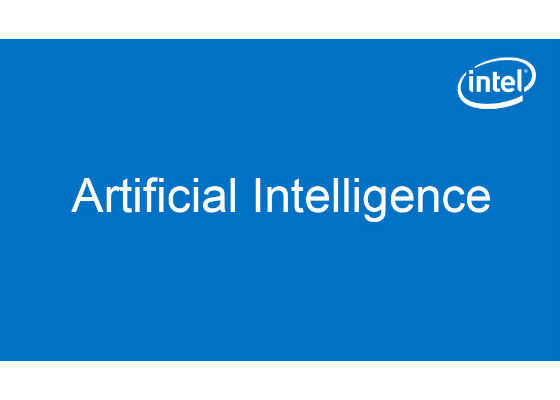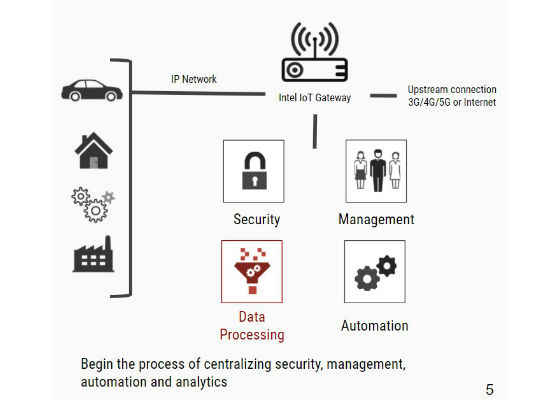Understanding Your Business in Real Time: Creating a Commercial Internet of Things Deployment Video Series

The Internet of things is providing new ways of creating data about everyday objects and interacting with everyday objects over the network. Business, schools, NGOs, and organizations of all types will benefit from understanding how to build their own Internet of Things network.
Many people hear the Internet of things, but do not know exactly what that means. I like to think about it like this, in the 1980s we had computers, but they were mostly not networked. Then in the early 90s, the Internet began connecting systems together making them work together and act together: seamlessly enabling the sharing of information. We found that connected computers were more useful and could enable new ways of performing everyday tasks, staying up-to-date and doing business. In fact, the Internet heralded an economic boom that transformed the way we do business.
When an object is said to be "Smart" or this is an "Internet of things (IoT) device," we are referring to the fact that it is networked and capable of talking to other devices on a local network and over the Internet. Think of a human brain. A single neuron is only amazing when it is networked. At this point, it is more than the sum of its parts, and we begin to think of it as being intelligent.
IoT is similar, except for this time around, instead of connecting computers or neurons, we are connecting objects of all types. The IoT is about networking our business processes so that we have real-time, up-to-date and actionable information. Often this actionable information can be sent to other business processes and create automation. Automation and real-time information will be critical to businesses that are competitive in the future.
To begin learning how to build a commercial IoT deployment, we have published a series of courses on the Intel Developer Zone. https://software.intel.com/en-us/iot-comm-devkit-labs
Also, take advantage of the how-to articles, events, hardware and community forums at https://software.intel.com/
Soon we will begin publishing a video series on building a commercial Internet of things networks. A step- by-step guide that will take you through the process of developing, managing, securing and automating professional Internet of Things system deployment.
1. Setup the Development Environment – this section takes us through how to set up a development system and connect it to Intel IoT Gateway. We will develop a small program and ensure that it deploys to the gateway.
2. Sensors and Actuators – in this section, we will look at the different types of sensors and actuators and learn how Intel's open-source software is making it easy to collect data from sensors into control actuators from a computing device. We will introduce the open source
3. MRAA and UPM libraries and show several examples of working with different types of sensors and actuators.
4. Networking Protocols – In this section, we will review the different types of networking protocols that are common in IoT systems. Then we will take the sensor and actuator that we used in the previous section and network enable them. We will write a program that takes the sensor data and makes it available over MQTT–TLS and write a second service that allows the actuator to respond over restful HTTPS.
5. Fog Databases – in this section, we will go over the different types of databases that can be used on an edge IoT network, and we will deploy a Mongo DB database that listens to the sensor traffic and records it locally on site.
Custom Administrative Interfaces – In this section, we will deploy our custom administrative interface, which allows us to see all of the sensors and actuators that are on our local area network. This will also give us an interface to write "serverless functions" which will be the topic in the automation section.
6. Automation – In this section, we will write a service that allows us to deploy "serverless functions." The administrator will be able to deploy these to the local gateway and have them react automatically in response to the sensor data.
7. Security – In this section, we will lock down the Intel IOT Gateway and prepare it for deployment.
8. Analytics – In this section, we will create our own web-based analytics dashboard and use it to monitor activity on our Edge IoT network.
By the time you finish the series, you will have the knowledge and the tools to create your own professional IoT network.
Whether you are trying to use machine learning to: predict factory equipment failure, be more efficient about heating and cooling in large buildings, analyzing how to reduce energy requirements and comply more easily with environmental regulation then the knowledge to deploy, secure and manage an Internet of things network will help your business become more competitive. In addition, if you are interested in determining how customers interact with digital signs and advertisements then you want to learn how to build your own Internet of Things network.
For more such intel IoT resources and tools from Intel, please visit the Intel® Developer Zone
Source:https://software.intel.com/en-us/blogs/2017/06/21/understanding-your-business-in-real-time





